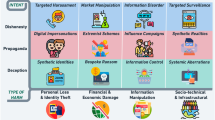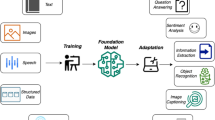Abstract
A conversational agent (chatbot) is a software that can communicate with humans using natural language. Conversation modeling is an extremely important topic in natural language processing and artificial intelligence (AI). Indeed, since the birth of AI, creating a good chatbot remains one of the most difficult challenges in this field. Although chatbots can be used for a variety of tasks, they generally need to understand what users are saying and to provide appropriate answers to their questions. In this paper, we present midoBot: a deep learning Arabic chatbot based on the seq2seq model. midoBot is capable of conversing with humans on popular conversation topics through text. We built the model and tested it in the Tensorflow 2 deep learning framework using the most seq 2 seq Model architectures. We use a dataset of ~81,659 pairs of conversations created manually and without any handcrafted rules. Our algorithm was trained on a VM on google cloud (GPU TESLA K80 10 GO). The results obtained are significant, In most questions the chatbot was able to reproduce good answers.












Similar content being viewed by others
References
Al-Ghadhban D, Al-Twairesh N (2020) Nabiha: an Arabic dialect chatbot. Int J Adv Comput Sci Appl 11. https://doi.org/10.14569/IJACSA.2020.0110357
Al-Humoud S, Aldamegh W (2018) Arabic chatbots: a survey. Int J Adv Comput Sci Appl 9. https://doi.org/10.14569/IJACSA.2018.090867
Ali DA, Habash N (2016) Botta: An arabic dialect chatbot. In: Proceedings of COLING 2016, the 26th International Conference on Computational Linguistics: System Demonstrations, 2016, pp 208–212
Alotaiby F, Foda S, Alkharashi I (2012) New approaches to automatic headline generation for Arabic documents. J Eng Comput Innov 3:11–25. https://doi.org/10.5897/JECI11.053
Antoun W, Baly F, Hajj H (2020) AraBERT: Transformer-based Model for Arabic Language Understanding
Cho K, van Merriënboer B, Gulcehre C, Bougares F, Schwenk H, Bengio Y (2014) Learning phrase representations using RNN encoder-decoder for statistical machine translation. https://doi.org/10.3115/v1/D14-1179
Cho K, van Merrienboer B, Gulcehre C, Bahdanau D, Bougares F, Schwenk H, Bengio Y (2014) Learning Phrase Representations using RNN Encoder-Decoder for Statistical Machine Translation
Eljundi O, Antoun W, El Droubi N, Hajj H, El-Hajj W, Shaban K (2019). hULMonA (حلمنا): The Universal Language Model in Arabic. https://doi.org/10.18653/v1/W19-4608
Fadhil A, AbuRa'ed A (2019) OlloBot -towards a text-based arabic health conversational agent: evaluation and results. https://doi.org/10.13140/RG.2.2.16090.90560
Fouad M, Mahany A, Katib I (2020) Masdar: a novel sequence-to-sequence deep learning model for Arabic stemming. https://doi.org/10.1007/978-3-030-29513-4_26
Goda Y, Yamada M, Matsukawa H, Hata K, Yasunami S (2014) Conversation with a chatbot before an online EFL group discussion and the effects on critical thinking. J Inf Syst Educ 13(1):1–7
Hadj Ameur M, Meziane F, Guessoum A (2017) Arabic machine transliteration using an attention-based encoder-decoder model. Proc Comput Sci 117:287–297. https://doi.org/10.1016/j.procs.2017.10.120
Microsoft (2017b) Microsoft bot framework. https://dev.botframework.com/. Accessed: 2017-10-04
Mozannar H, Hajal K, Maamary, E, Hajj H (2019) Neural Arabic Question Answering
Nguyen H, Morales D (2017) A neural Chatbot with personality
Palasundram K, Mohd Sharef N, Nasharuddin N, Kasmiran K, Azman A (2019) Sequence to sequence model performance for education Chatbot. International journal of emerging Technologies in Learning (iJET), 14(24), 56–68. Kassel, Germany: International Journal of Emerging Technology in Learning
Serban I, Sankar C, Germain M, Zhang S, Lin Z, Subramanian S, Kim T, Pieper M, Chandar S, Ke N, Mudumba S, Brebisson A, Sotelo J, Suhubdy D, Michalski V, Nguyen A, Pineau J, Bengio Y (2017) A Deep Reinforcement Learning Chatbot
Shang L, Lu Z, Li H (2015) Neural Responding Machine for Short-Text Conversation. Accepted as a full paper of ACL-2015. https://doi.org/10.3115/v1/P15-1152
Soliman AB, Eisa K, El-Beltagy SR (2017) AraVec: A set of Arabic Word Embedding Models for use in Arabic NLP. In: proceedings of the 3rd International Conference on Arabic Computational Linguistics (ACLing 2017), Dubai, UAE
Sutskever I, Vinyals O, Le Q (2014) Sequence to sequence learning with neural networks. Adv Neural Inf Proces Syst 4
Turing AM (2009) Computing machinery and intelligence. In: Parsing the Turing test. Springer, Dordrecht, pp 23–65
Vinyals O, Quoc VL (2015) A Neural Conversational Model. ArXiv abs/1506.05869: n. pag
Wallace RS (2009) The anatomy of alice. Parsing the Turing Test, pp 181–210
Wallace R (2009) The anatomy of A.L.I.C.E. In: Epstein R, Roberts G, Beber G (eds) Parsing the turing test: philosophical and methodological issues in the quest for the thinking computer. Dordrecht, Springer Netherlands, pp 181–210
Weizenbaum J (1966) ELIZA—a computer program for the study of natural language communication between man and machine. Commun ACM 9(1):36–45
Yin J, Chen Z, Zhou K, Yu C (2019) A Deep Learning Based Chatbot for Campus Psychological Therapy
Younes J, Souissi E, Hadhémi A, Ferchichi A (2018) A sequence-to-sequence based approach for the double transliteration of Tunisian dialect. Proc Comput Sci 142:238–245. https://doi.org/10.1016/j.procs.2018.10.481
Author information
Authors and Affiliations
Corresponding author
Additional information
Publisher’s note
Springer Nature remains neutral with regard to jurisdictional claims in published maps and institutional affiliations.
Rights and permissions
About this article
Cite this article
Boussakssou, M., Ezzikouri, H. & Erritali, M. Chatbot in Arabic language using seq to seq model. Multimed Tools Appl 81, 2859–2871 (2022). https://doi.org/10.1007/s11042-021-11709-y
Received:
Revised:
Accepted:
Published:
Issue Date:
DOI: https://doi.org/10.1007/s11042-021-11709-y




